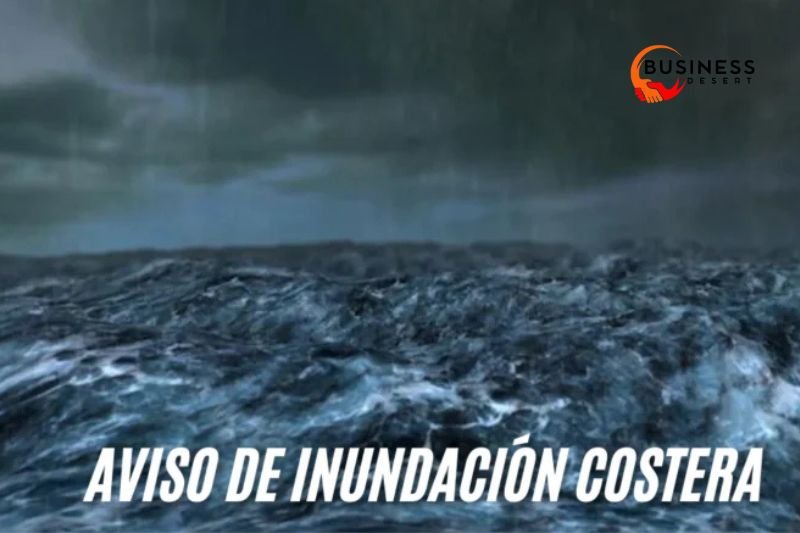Coastal flood warnings, or Aviso De Inundación Costera, are crucial alerts issued to inform communities about the imminent threat of flooding along coastlines. These warnings are not just routine notices but are essential for preparing residents and local authorities for the possibility of severe weather events that can lead to rapid water rise and flooding. Understanding these warnings is the first step in safeguarding lives and property.
Table of Contents
What is an Aviso De Inundación Costera?
An Aviso De Inundación Costera translates to a coastal flood warning in English. It is an alert issued by weather agencies to signal that conditions are likely to cause flooding in coastal areas. These conditions may include high tides, storm surges, or significant rainfall events that push seawater onto the land, which can inundate towns, damage properties, and disrupt normal life.
Why It’s Important
Recognizing the importance of these warnings can mean the difference between adequate preparation and facing unexpected hardship. When a warning is issued:
- Local governments spring into action, reinforcing levees, deploying sandbags, and preparing for possible evacuation measures.
- Residents are advised to secure their properties, gather essential supplies, and stay informed through continuous updates.
By staying informed and prepared, communities can significantly reduce the damage caused by coastal floods and ensure quicker recovery post-event.
Causes of Coastal Flooding
Coastal flooding is a complex phenomenon influenced by various natural factors that can devastate communities. Understanding these causes helps residents and authorities prepare more effectively and mitigate potential damage.
Storm surges are perhaps the most significant contributor to coastal flooding. They occur when strong winds from hurricanes or tropical storms push seawater toward the shore, leading to temporary rises in water levels that can overwhelm coastal defenses. The intensity of a storm surge can vary based on the storm’s strength, speed, and the shape of the coastline it impacts. Areas with shallow, gently sloping continental shelves are particularly susceptible to high storm surges.
Regular high tides can cause flooding, especially when they align with other meteorological events. King tides, which are the highest tides of the year, occur due to the gravitational pulls of the moon and the sun aligning and can significantly exacerbate flooding risks when combined with stormy weather. Coastal communities often experience these tides as a preview of what may become commonplace due to rising sea levels.
The long-term player in the increased frequency and severity of coastal flooding is climate change, contributing to rising sea levels. As global temperatures climb, glaciers melt and thermal expansion causes the sea to rise. This incremental rise not only increases the baseline water level but also the potential for higher and more frequent tidal flooding, even on calm and clear days.
All these factors can combine in a perilous symphony during a single weather event, leading to severe coastal flooding. For instance, a storm surge during a king tide, compounded by higher baseline sea levels, can result in unprecedented flooding levels. Understanding these interactions is crucial for preparing for and responding to flood events.
Preparing for Coastal Floods
Preparation can significantly reduce the impact of coastal floods. Here are practical steps communities and individuals can take to prepare before a flood warning is issued.

The first step in preparation is to stay informed about potential flood risks. This means regularly checking weather forecasts, subscribing to local alert systems, and understanding the community’s flood response plans. Knowledge of when and where flooding is expected can save lives and property by allowing timely preparations and evacuations.
Securing a home against flooding is vital. Residents should consider installing flood barriers or sandbags, moving valuables to higher levels, and ensuring that drainage systems are clear to handle heavy water flow. Simple measures, such as checking sump pumps and backflow valves, can prevent water from entering the home.
Every household should have an emergency kit ready that includes drinking water, non-perishable food, first aid supplies, flashlights, and extra batteries. Developing an evacuation plan that all family members understand is also crucial. This plan should include routes to safe high ground and a communication plan in case family members are separated.
Local governments can organize community drills and education sessions to prepare residents for coastal flood events. These initiatives can improve community response during actual events and help clarify the roles and responsibilities of various emergency services, ensuring a coordinated and efficient response.
Long-Term Impact of Coastal Flooding on Communities
The repercussions of coastal flooding extend far beyond the immediate aftermath of the events. They can have lasting impacts on communities, economies, and the environment.
Coastal floods can cause significant economic damage, including destruction of property, loss of business revenue, and costly repairs and rebuilding efforts. Infrastructure such as roads, bridges, and public utilities may also be severely affected, leading to long-term economic burdens on communities and governments.
The environmental impacts of coastal flooding are profound. Saltwater intrusion can degrade soil quality and kill freshwater vegetation. Erosion can lead to loss of land and damage to habitats, affecting biodiversity in coastal areas. Pollution from overflowed sewers and disrupted industrial sites can also harm local wildlife and ecosystems.
The aftermath of coastal floods can pose serious public health risks. Standing water can become breeding grounds for mosquitoes, increasing the risk of vector-borne diseases like West Nile virus. Floodwaters can also spread contaminants and pathogens, leading to waterborne diseases. Mental health issues can arise from the stress and trauma associated with flooding and displacement.
Building resilience against future floods is crucial. This involves not only strengthening physical infrastructure but also improving emergency preparedness, community awareness, and economic stability to bounce back from disasters more effectively. Strategies like creating wetlands to absorb floodwaters and reinforcing buildings against floods are part of long-term resilience planning.
Future Outlook and Adaptation Strategies
As the frequency and severity of coastal flooding continue to increase due to climate change, communities must adapt to this new reality.
Advancements in technology and climate science are enabling better predictive models for coastal flooding. These tools can forecast potential flood events with greater accuracy, allowing for more effective preparations and responses. Continuous monitoring of sea levels and weather patterns is also essential for timely warnings.
Investing in flood-resistant infrastructure is key to reducing the impact of coastal floods. This includes elevating buildings, constructing sea walls, improving drainage systems, and developing land use practices that consider flood risks. Governments and communities need to prioritize these adaptations to protect against future events.
Effective adaptation also requires community engagement and robust policy frameworks. Policies that restrict development in high-risk areas, promote sustainable land use, and enforce building codes that require flood mitigation measures can significantly reduce risk. Community education programs can increase awareness and preparedness among residents.
Finally, a coordinated effort between governments, organizations, and individuals is crucial for effective adaptation. Global cooperation on climate change mitigation and local efforts to implement adaptation strategies must go hand in hand to address the challenges posed by increasing coastal floods.
Conclusion
Coastal flood warnings are a vital tool in the ongoing effort to protect lives and properties from the increasing threat of flooding. By understanding the causes, preparing adequately, and adapting to the challenges posed by climate change, communities can mitigate the impacts of coastal floods. Awareness, preparation, and adaptation are the keys to living safely in the face of rising seas and stronger storms. Stay informed, stay prepared, and stay safe.
For More Visit : Businessdesert







